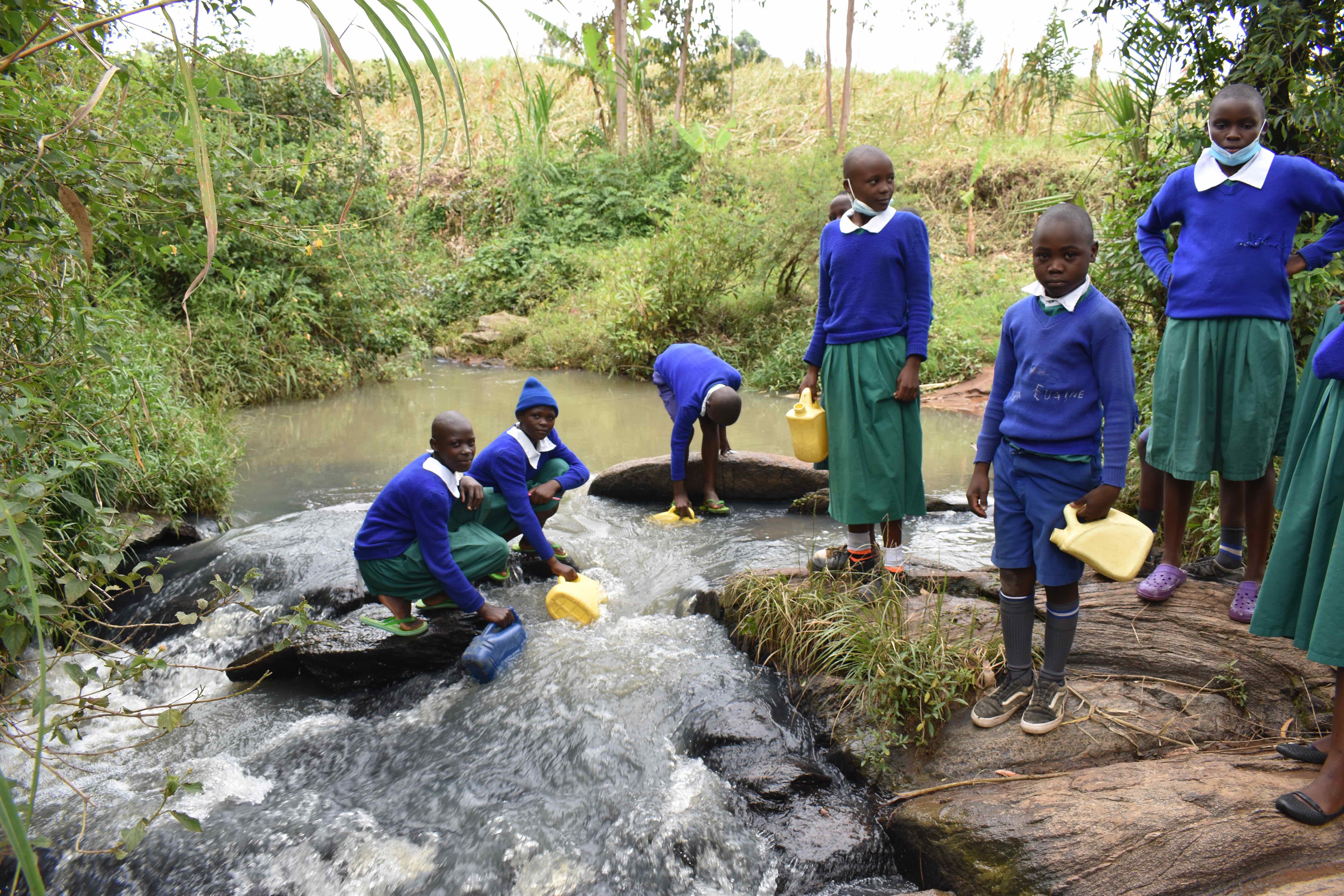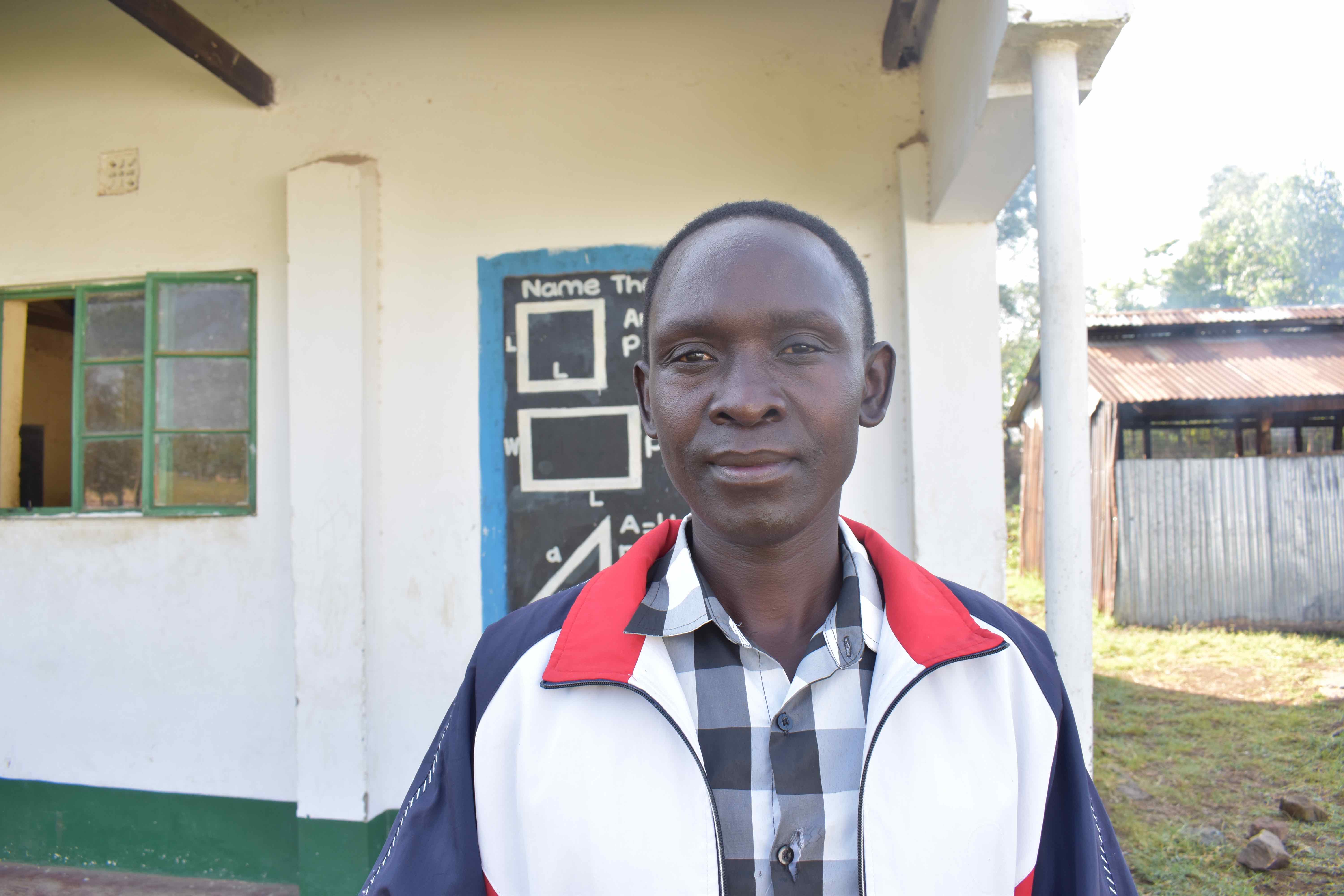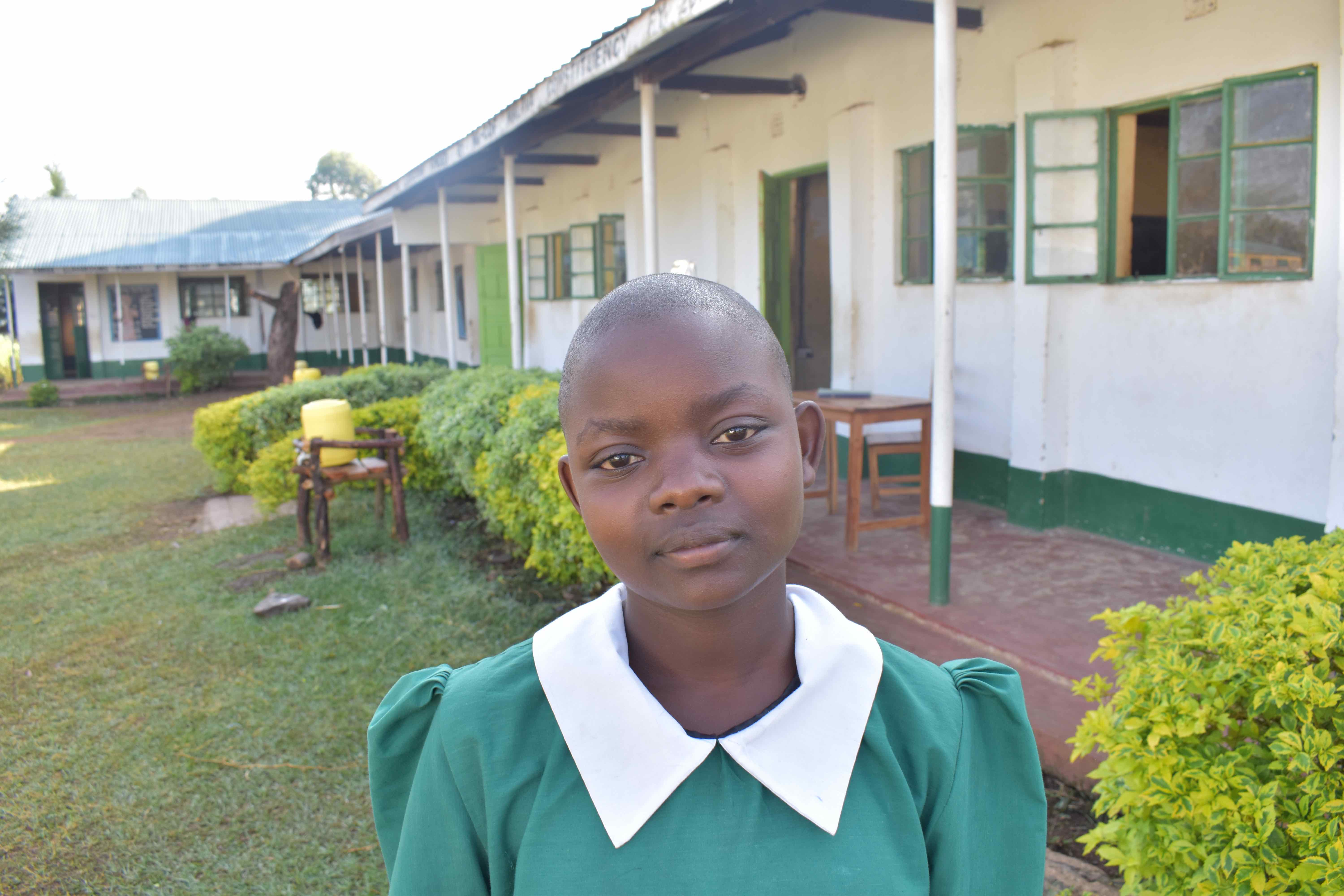March, 2022: Silungai Primary School Rainwater Tanks Complete!
Silungai Primary School in Kenya now has access to safe, clean water thanks to the completion of their rain tanks! We installed new latrines and handwashing stations for students, and we trained the school on improved sanitation and hygiene practices, including COVID-19 prevention. These components will unlock the opportunity for these students to live better, healthier lives.

"No more walking in the hot sun fetching water for school use. I am facing my final examination in a few months' time [and] with water available in my school now, I'll be able to pass with flying colors," said Sheila A., 14.

Sheila collecting water.
Teachers were just as excited as the students about the new rain tanks on campus.
Teacher Protus Mwatuni, 40, said, "I truly believe that with 150,000 liters of water in our school, there is no single day our pupils will lack water. I'll be able to finish the syllabus of my respective subjects on time. With the pupils in class full time, no more time will be wasted."

Mr. Mwatuni splashing water.
How We Go From Ground to Rain Tank
Construction for these two 75,000-liter rain tanks was successful!
Parents, staff, and students helped our artisans gather everything needed for construction. The school's kitchen staff and a few parents helped provide meals for the artisans, while the school provided the artisans' accommodations. Locals helped our artisans with their manual labor, too.
The process officially began with our staff and school administration looking around the school compound to determine the best location for the new rain tanks. This needed to be the best site with enough land and a nearby building with good, clean roofing to catch the rainwater.

Building a foundation.
Then, we cleared the site by excavating the soil to make level ground for the tank foundations. We cast the foundations by laying big stones on the level ground and reinforcing them using steel wire, concrete, and waterproof cement. We affixed both of the drawing pipes and the drainage pipes as we laid the foundations.

Wire walls were added to the foundations.
Next, we formed the walls using a skeleton of rebar and wire mesh with sugar sacks temporarily tied to the outside as backing. We attached this to the foundations' edges so that the work team could start the Ferro-cementing process. They began layering the walls with cement, alternating with the inner and outer sides until six cement layers were in place. (The sugar sacks are removed once the interiors receive their first two layers of cement.)

Pouring concrete into the pillar molds.
Inside the tanks, we cast one central and four support pillars each to ensure the domes do not cave in once cemented. Meanwhile, we plastered the inner walls while roughcasting the outer walls. We dug and plastered the access areas to the taps outside the tanks, installing short staircases. In front of the access areas, we constructed soak pits where spilled water can drain from the access areas through the ground. The pits help keep the tap area dry and tidy.

Plastering the roof over the wire frame.
Dome construction could begin after the tank walls settled. We attached a dome skeleton of rebar, wire mesh, and sugar sacks to the tank walls before cementing and plastering it using similar techniques as the wall construction. We included small manhole covers into the domes to allow access for future cleanings and water treatments.
We propped long wooden poles (about 75 of them!) inside each of the tanks to support the domes while they cured. Then it was down to the finishing touches: fitting lockable covers over the tap areas, affixing the gutters to the roof and tanks, and setting overflow pipes in place at the edge of the domes for when the tanks reach capacity.

A tank curing.
Once finished, we gave the rain tanks three to four weeks to undergo complete curing. Finally, we removed the interior support poles and dome sugar sacks and cleaned the tanks.
We officially handed over the rain tanks to the school. Students and staff celebrated the presence of clean water on campus. The event was an excellent chance for us to acknowledge the school administration and students as the primary parties entrusted with the tools we have given and remind them of our continued support as they develop. Happiness, thanksgiving, and appreciation were the order of the day, flowing in all directions.

Students are excited about water.
Field Officer, Lillian Achieng', shared that the determination and zeal displayed by this school's management, teachers, parents, and pupils were commendable. Despite the many challenges with collecting enough local resources for the two tanks, they worked hard to ensure success.
VIP Latrines
This project funded six new ventilated improved pit (VIP) latrines, three for the girls and three for the boys. These new latrines have cement floors designed to be easy to use and clean, locking doors for safety and privacy, and vents designed to keep air flowing up and out through the roof. With two rain tanks right on school property, there should be enough water to keep them clean.
New Knowledge
We scheduled hygiene and sanitation training with the school's staff, who ensured that the training date would be convenient for pupils and teachers. When the training day arrived, facilitators Lillian, Olivia, Baverlyne, and Dominic deployed to the site to lead the event. 23 students and teachers attended the training, which we held under some eucalyptus trees growing on the school campus since every classroom was in use.
The training officers informed the Head Teacher in advance about the training and asked him to help recruit participants. Attendance for the training was higher than expected, and some participants had to be sent back to class to make sure participants could still physically distance to follow the COVID protocols.

We focused on COVID-19 prevention, transmission, and symptoms while also covering several other topics. These included personal hygiene such as bathing, oral hygiene, and the ten steps of handwashing; environmental hygiene; child rights; operation and maintenance of the rain tank, latrines, and handwashing stations; and leadership and governance. During the latter, the students elected their peers to lead their newly formed student health club.
The club will be significantly involved in the water, sanitation, and hygiene project management at school. It will encourage good health and hygiene practices amongst their peers, teachers, and the larger community.

Learning about tank maintenance.
We involved stretches, dances, and physical activities between each topic to keep the pupils' energy up and their minds active. By the end of the training, each pupil understood their role in sustaining clean water and good health within their school community.
Handwashing Stations

The two handwashing stations were set up during training and handed over to the student health club. These were placed outside of the girls' and boys' latrines to encourage handwashing after latrine use. Health club members will teach other students how to wash their hands at the stations properly, make sure the stations are filled with water, and ensure that there is always a cleaning agent such as soap or ash available.
A memorable session was soapmaking, where participants learned the entire process. One of the school's teachers, who was not a participant initially, was so excited to learn how to make soap that they abandoned their class that was in session. The end product amazed everyone. They decided they would share what they had learned.

Valeria M., 11, said, "The training has really impacted so much knowledge in me. I can now make soap if equipped with the reagents. I can correctly wash my hands now."

Valeria.
Valeria was also appointed chairperson of the student health club and shared, "To juice it all up, I am now a leader of a club in my school. This has given me so much confidence."
"I will encourage my fellow pupils who did not attend this training to wear their masks so that we can protect each other. I will also wash my hands often with soap. Initially, I used to wash without soap. I never understood the importance of using it, but now I do," said Emmanuel M., 10.

Students planting trees.
We asked Emmanuel what it was like to be at home for most of the last year due to Kenya's national coronavirus-related school closures and what it has been like coming back to school.
"I missed my school friends so much. I also missed my teachers and the lessons we learn."
Now that he is back at school, he said, "I am happy that I can play and study with my friends again. My teachers are also present to help me with my academics and that makes me happy."
When an issue arises concerning the rain tanks, the students and teachers are equipped with the necessary skills to rectify the problem and ensure the water points work appropriately. However, if the issue is beyond their capabilities, they can contact our field officers to assist them. Also, we will continue to offer them unmatchable support as a part of our ongoing monitoring and maintenance program.
Thank you for making all of this possible!





 Rainwater Catchment
Rainwater Catchment
 Rehabilitation Project
Rehabilitation Project








































